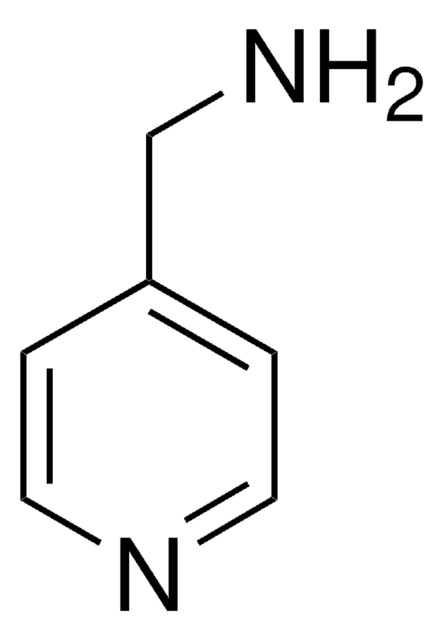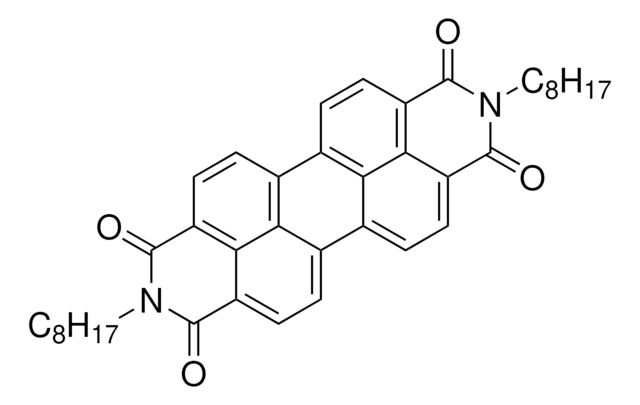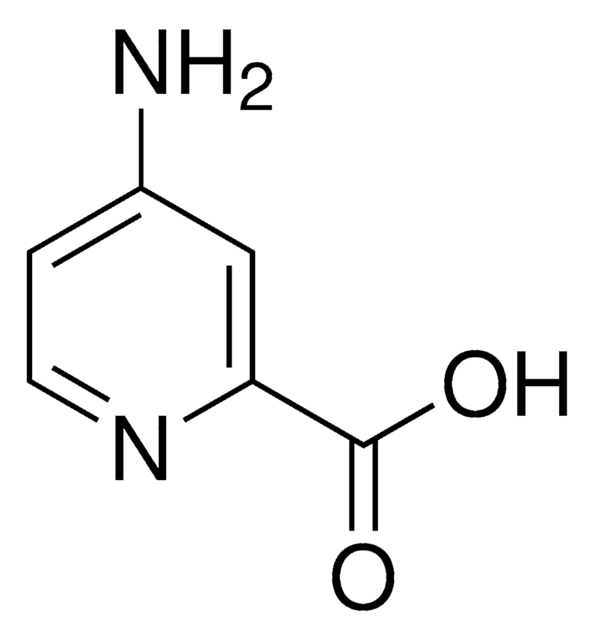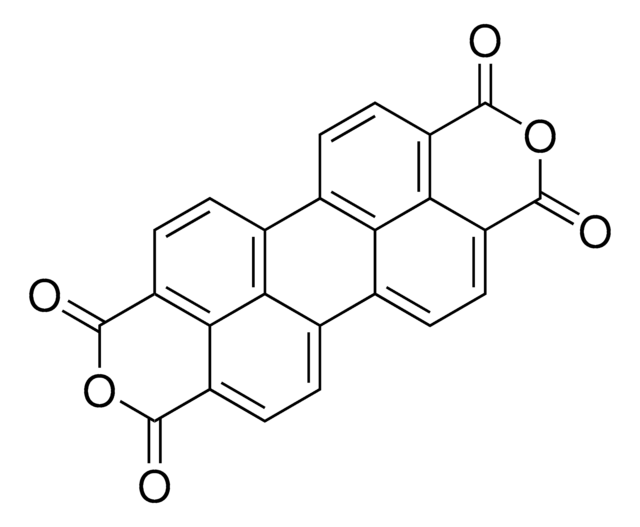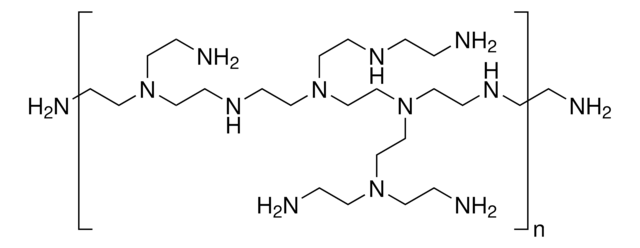771635
2,9-Dipropylanthra[2,1,9-def:6,5,10-d′e′f′]diisoquinoline-1,3,8,10(2H,9H)tetrone
97%
Synonym(s):
Bis(n-propylimido)perylene, PDI-C3, Perylene-3,4,9,10-tetracarboxylic acid bis(propylimide)
About This Item
Recommended Products
Assay
97%
form
solid
mp
>300 °C
λmax
524, 488 nm
semiconductor properties
N-type (mobility=0.1-2.1 cm2/V·s)
SMILES string
CCCN1C(=O)c2ccc3c4ccc5C(=O)N(CCC)C(=O)c6ccc(c7ccc(C1=O)c2c37)c4c56
InChI
1S/C30H22N2O4/c1-3-13-31-27(33)19-9-5-15-17-7-11-21-26-22(30(36)32(14-4-2)29(21)35)12-8-18(24(17)26)16-6-10-20(28(31)34)25(19)23(15)16/h5-12H,3-4,13-14H2,1-2H3
InChI key
GEIYCUVJOKJQPO-UHFFFAOYSA-N
General description
Application
Excellent candidates as electron accepting building blocks for organic photovoltaics (OPVs).
Signal Word
Warning
Hazard Statements
Precautionary Statements
Hazard Classifications
Eye Irrit. 2 - Skin Irrit. 2 - STOT SE 3
Target Organs
Respiratory system
Storage Class Code
11 - Combustible Solids
WGK
WGK 3
Flash Point(F)
Not applicable
Flash Point(C)
Not applicable
Regulatory Information
Choose from one of the most recent versions:
Certificates of Analysis (COA)
Don't see the Right Version?
If you require a particular version, you can look up a specific certificate by the Lot or Batch number.
Already Own This Product?
Find documentation for the products that you have recently purchased in the Document Library.
Articles
Intrinsically stretchable active layers for organic field-effect transistors (OFET) are discussed. Polymer structural modification & post-polymerization modifications are 2 methods to achieve this.
Fabrication procedure of organic field effect transistor device using a soluble pentacene precursor.
Solution-processed organic photovoltaic devices (OPVs) have emerged as a promising clean energy generating technology due to their ease of fabrication, potential to enable low-cost manufacturing via printing or coating techniques, and ability to be incorporated onto light weight, flexible substrates.
Thin, lightweight, and flexible electronic devices meet widespread demand for scalable, portable, and robust technology.
Our team of scientists has experience in all areas of research including Life Science, Material Science, Chemical Synthesis, Chromatography, Analytical and many others.
Contact Technical Service![N,N′-Bis[2-(2-tert-butyldimethylsilyloxyethoxy)ethyl]-3,4,9,10-perylenetetracarboxylic diimide 97%](/deepweb/assets/sigmaaldrich/product/structures/334/047/4ac691aa-ae25-4df1-9e0d-09ed12cb8f1f/640/4ac691aa-ae25-4df1-9e0d-09ed12cb8f1f.png)
![2,9-Bis[(4-methoxyphenyl)methyl]anthra[2,1,9-def:6,5,10-d′e′f′]diisoquinoline-1,3,8,10(2H,9H)tetrone 99%](/deepweb/assets/sigmaaldrich/product/structures/106/475/f64ce051-cf27-4e7c-845f-a63006318206/640/f64ce051-cf27-4e7c-845f-a63006318206.png)
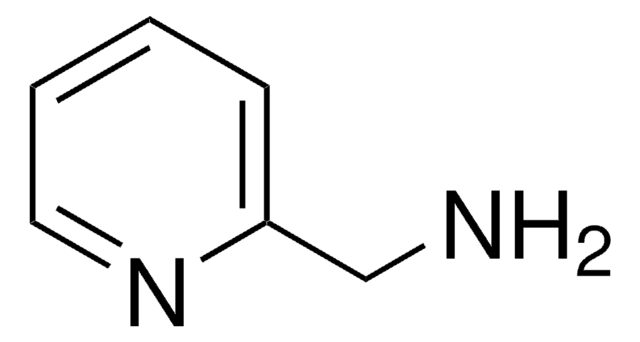

![2,9-Diheptylanthra[2,1,9-def:6,5,10-d′e′f′]diisoquinoline-1,3,8,10(2H,9H)tetrone 99%](/deepweb/assets/sigmaaldrich/product/structures/251/632/c0449894-4cfb-4d95-a3db-e615554fef5f/640/c0449894-4cfb-4d95-a3db-e615554fef5f.png)
